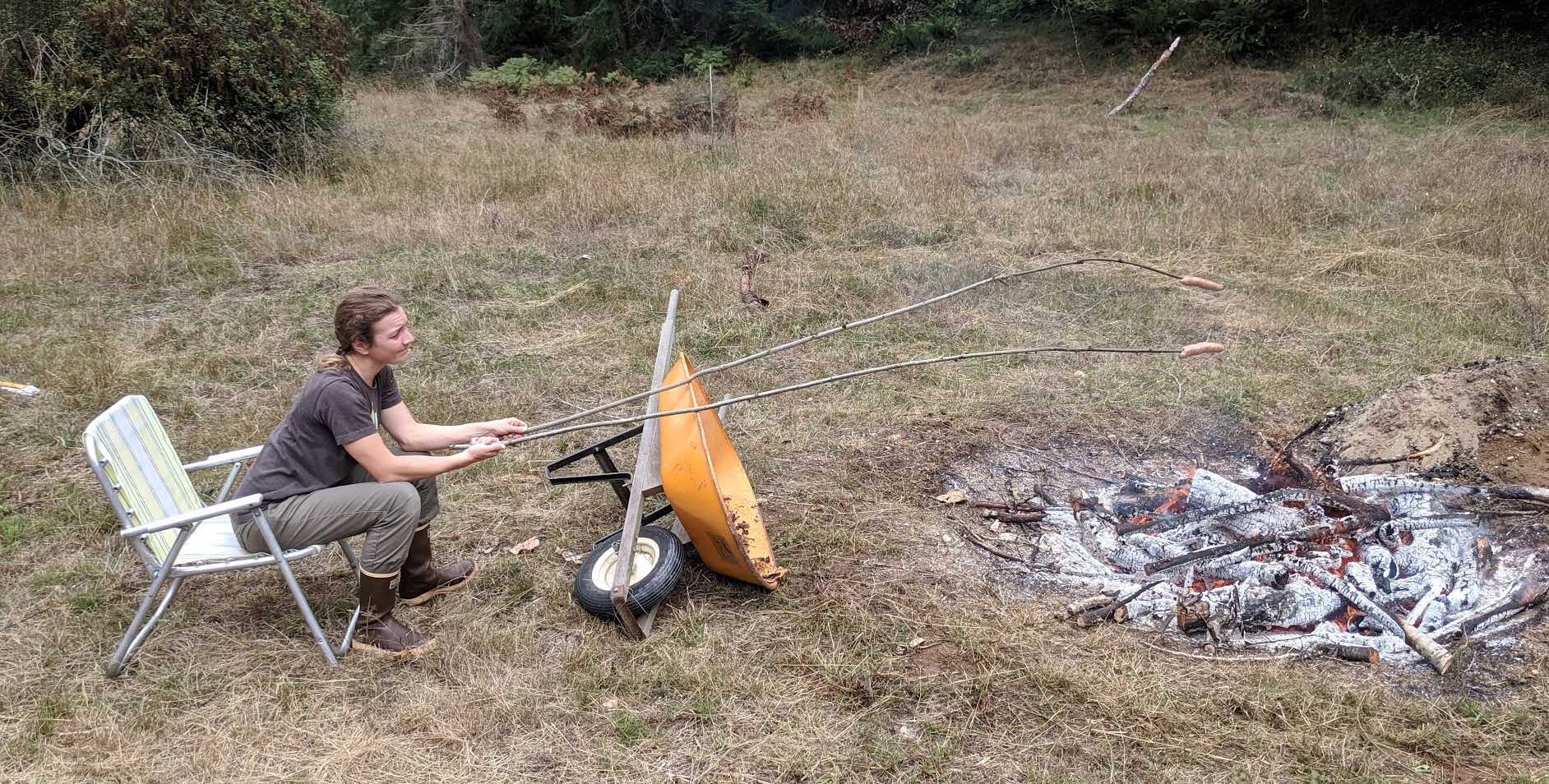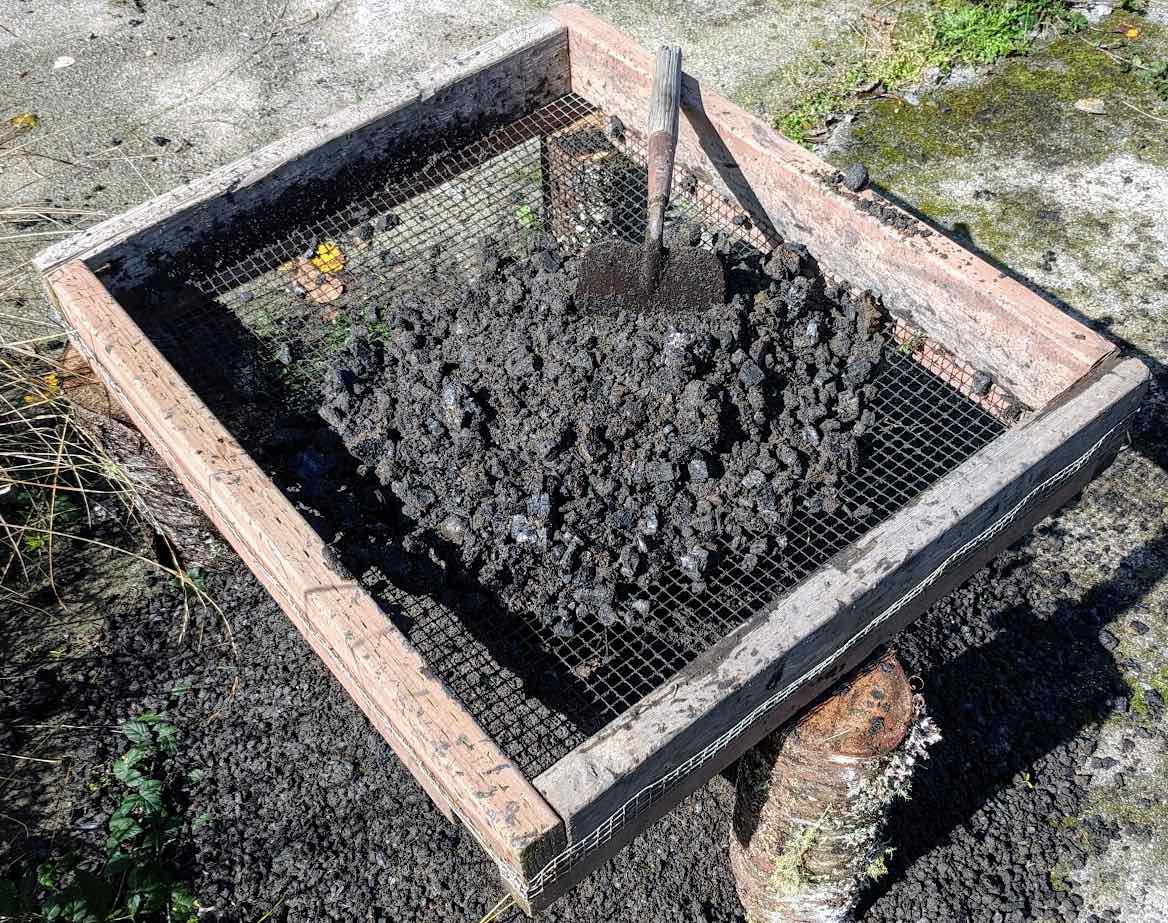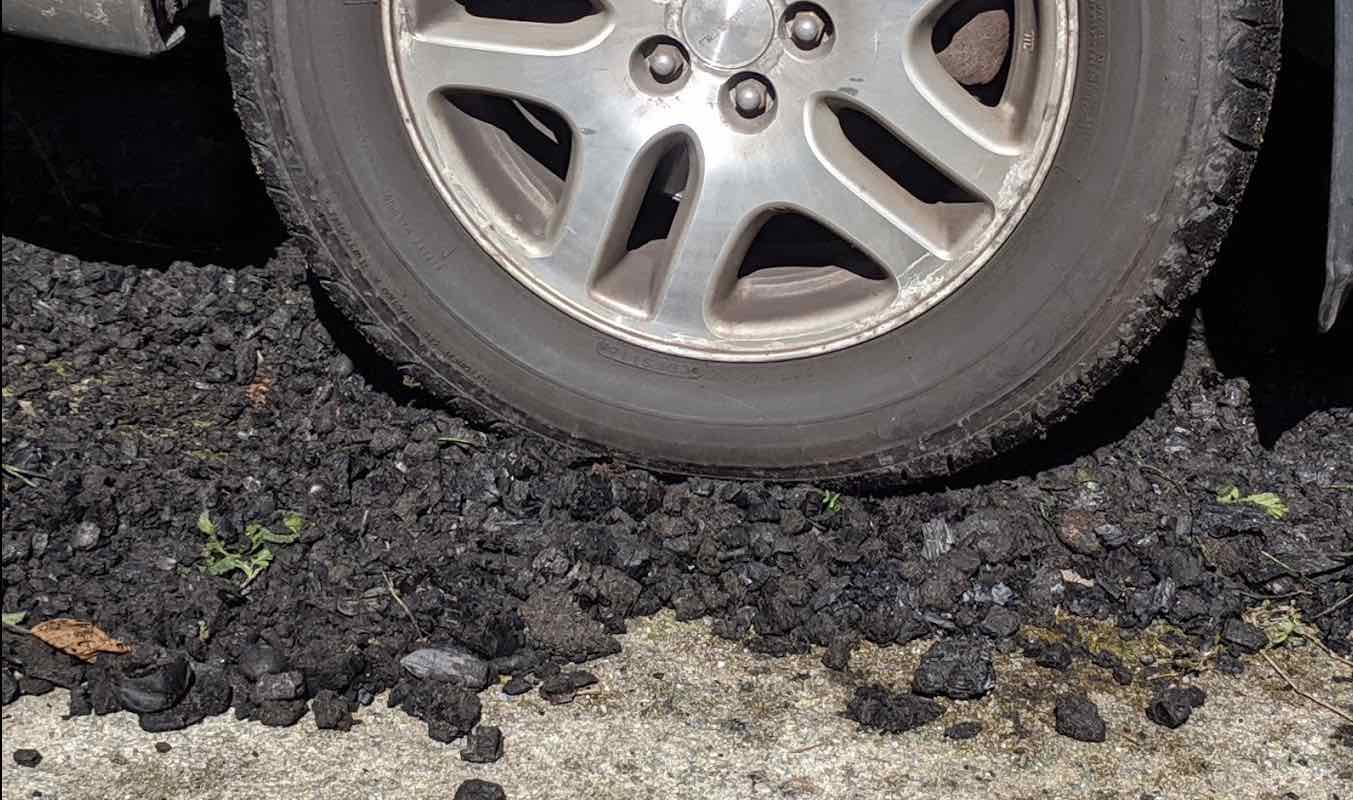Biochar is charcoal made sustainably from waste wood. It sequesters carbon in the soil and prevents nutrients from being slowly leached. Biochar is typically charged with fertilizer before being applied to a garden, where the nutrients are slowly released.
A good friend of mine makes biochar in batches using a biochar barrel. He’ll often use wood cutoffs from construction projects (eg. untreated fir 2x4). I typically burn these for heat in my wood stove, but I have a large amount of brush from fallen trees that needs disposal.
To turn this brush into bulk biochar I first dug a 4’ hole. I chose this size to comply with the maximum burn pile that doesn’t need a permit. We cut the brush into pieces and fed it over several hours and it burned extremely clean. Eventually the wood filled the hole with charcoal. Only the surface wood turns to ash, which is not desirable. The rest stays charcoal because it doesn’t get enough oxygen to burn to ash.

Afterwards we covered the pit with soil and watered a bit, but a week later when I dug it up it re-ignited. Next time I would use a lot more water to put out the coals.
Once the coals cooled we dug them up and moved them to a concrete slab. Overall we had about 1/3 of a yard of charcoal. We sifted the charcoal to separate out the fine product, since it’s better as fertilizer. Large pieces will absorb nutrients without making it available to plants.

The rest we spread out and crushed by driving over it, which was incredibly effective.

We mixed in calcium carbonate and kelp meal to charge the biochar. Compose would work better to charge all the binding sites, but it’s more labor intensive to mix in compost. We’ll likely mix our biochar in with finished compost before distributing it in the garden.
